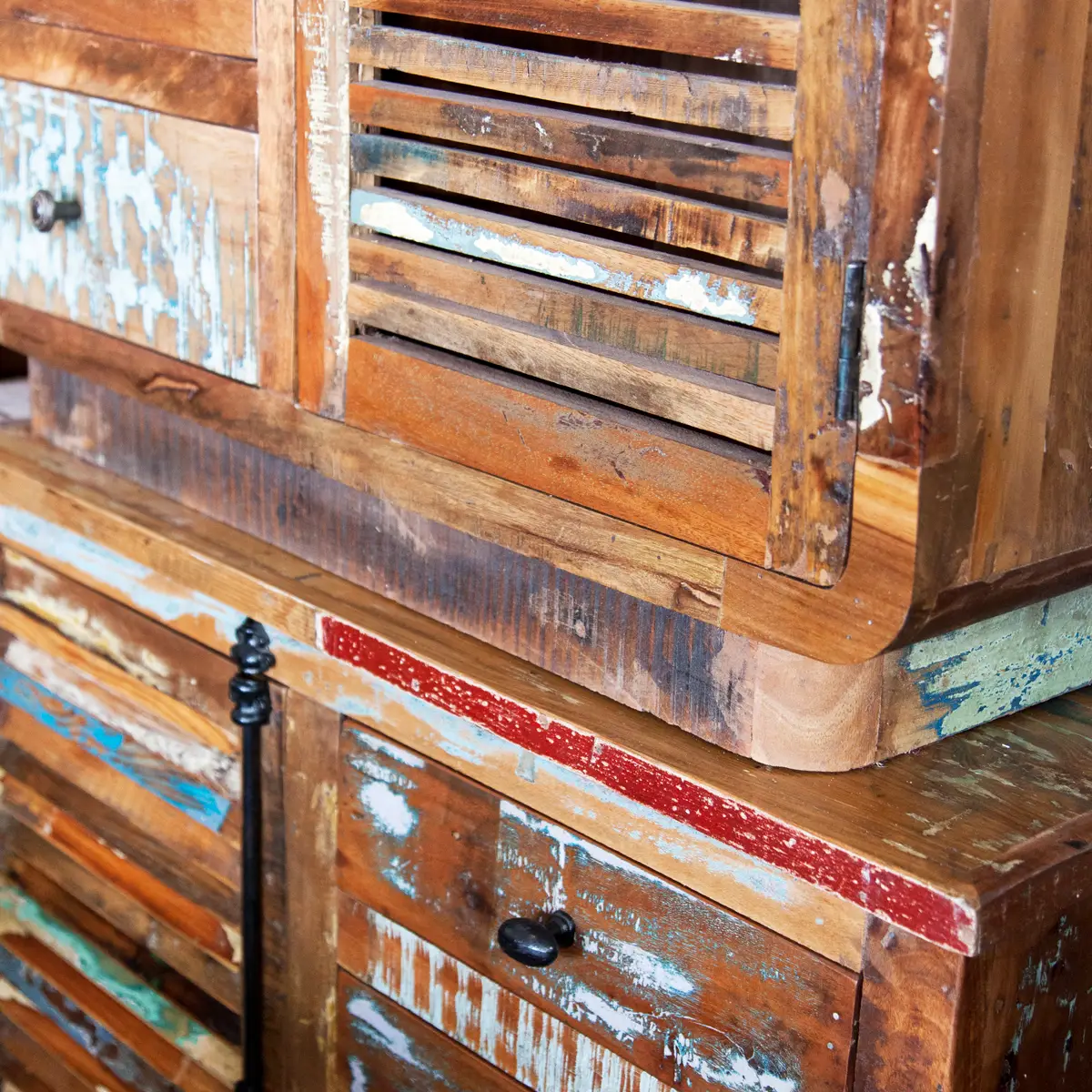Table of Contents
Introduction
In 2022–23, Australia produced 4.3 million cubic metres of sawnwood, with 95% of it consumed domestically—revealing the significant demand for wood products in our nation .
Choosing reclaimed timber furniture directly supports this demand by reducing pressure on new timber production and diverting waste from landfills.
On the Sunshine Coast—an area where natural beauty and sustainability go hand in hand—reclaimed furniture aligns perfectly with both lifestyle and environmental values.
Why Reclaimed Timber Matters
Reclaimed timber is salvaged from old buildings, barns, factory pallets, and even urban tree removals.
It offers:
- Lower embodied energy: Since the wood is already milled and seasoned, there's no need for new harvesting or processing.
- Waste reduction: Every reclaimed piece prevents timber from ending up in landfills.
- Historical charm: Each plank has a story—old growth grain, vintage nail holes, unique patina.
Globally, the reclaimed timber market is forecast to reach US $74 billion by 2030, with 31% of that attributed to furniture production —a testament to its rising value and appeal.
Benefits of Reclaimed Timber Furniture
Eco‑friendly & Sustainable
Opting for reclaimed wood helps reduce deforestation and carbon emissions. It’s estimated that making new wood furniture generates over 50% more carbon emissions than using reclaimed timber.
Superior Durability & Aesthetics
Reclaimed timber often comes from slow-grown, dense old-growth stocks, making it more stable and resistant to warping than its modern equivalents. Each piece boasts unique grain patterns, knots, and character.
Support for Circular Economy
Australia generated approximately 435,000 tonnes of recycled wood annually, yet 1.3 million tonnes still ends up in landfills. Choosing reclaimed pieces helps bridge this gap and promotes circular resource use.
Reclaimed Timber on the Sunshine Coast
Eco-conscious homeowners on the Sunshine Coast are turning to local artisans and suppliers who specialize in reclaimed timber furniture Sunshine Coast residents love for its sustainability, character, and craftsmanship.
- Locally sourced materials: Many furniture artisans salvage timber from region-wide demolition, farm clearances, or urban tree projects.
- Bespoke craftsmanship: Tailored furniture that reflects both individual style and the raw beauty of aged timber.
- Certification & trust: Look for providers adhering to national standards—e.g., the FWPA’s “Recycled Timber: Visually Graded Decorative Products”.
How to Choose Reclaimed Pieces
| Consideration | What to Look For |
|---|---|
| Certification | Check for Responsible Wood or FWPA grading labels. |
| Origin of Timber | Ask whether it’s from post-consumer, demolition, or offcuts—ensure ecological integrity. |
| Construction Quality | Inspect joints, fastenings, and finishes (e.g., kiln-dried vs. untreated). |
| Aesthetic Fit | Match patina, grain, and style to your home’s design vision. |
Conclusion
Reclaimed timber furniture offers far more than just visual appeal—it delivers sustainability, durability, and local integrity.
On the Sunshine Coast, where community and environment converge, selecting reclaimed pieces supports waste reduction, carbon savings, and vibrant craftsmanship.
As the reclaimed timber movement accelerates globally, now’s the perfect time to invest in furniture that tells a story—one rooted in resilience, beauty, and eco‑responsibility.
Would you like recommendations for local Sunshine Coast artisans or tips on styling reclaimed pieces in your home?




